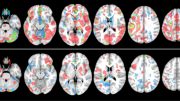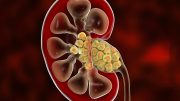
Mayo study links amateur contact sports (football, boxing, wrestling, rugby, basketball, baseball, etc.) in school to chronic traumatic encephalopathy (CTE) development, impacting mood, behavior, and cognition.
Past evidence has shown that professional football players are susceptible to a progressive degenerative disease, chronic traumatic encephalopathy (CTE), which is caused by repetitive brain trauma. Now a new study from the Mayo Clinic reveals a significant and surprising amount of CTE in males who had participated in amateur contact sports in their youth.
About one-third of these men whose brains had been donated to the Mayo Clinic Brain Bank had evidence of CTE pathology. CTE only can be diagnosed posthumously.
The Mayo study, published in the December issue of Acta Neuropathologica, links amateur contact sports — football, boxing, wrestling, rugby, basketball, baseball, and others played while in school — with the development of CTE, which when severe can affect mood, behavior, and cognition.
“The 32 percent of CTE we found in our brain bank is surprisingly high for the frequency of neurodegenerative pathology within the general population,” says the study’s lead author, Kevin Bieniek, a predoctoral student in Mayo Graduate School’s Neurobiology of Disease program.
“If 1 in 3 individuals who participate in a contact sport goes on to develop CTE pathology, this could present a real challenge down the road,” Bieniek says. It remains to be determined if the brain changes produce any observable effects on the behavior or cognition of the former athletes.
This study is the first to use CTE neuropathologic criteria established by the National Institute of Neurological Disorders and Stroke (NINDS) earlier this year to look for incidence of the disease in nonprofessional athletes, says the study’s senior author, Dennis Dickson, M.D., a neuropathologist at Mayo Clinic.
“Using these criteria, Bieniek’s report is the first detailed description of CTE pathology in a brain bank. As such, his work is groundbreaking,” Dr. Dickson says. “The frequency with which he found CTE pathology in former athletes exposed to contact sports was surprising. It is a pathology that had gone previously unrecognized.” Bieniek is a member of Dr. Dickson’s laboratory.
“The purpose of our study is not to discourage children and adults from participating in sports because we believe the mental and physical health benefits are great,” Bieniek says. “It is vital that people use caution when it comes to protecting the head. Through CTE awareness, greater emphasis will be placed on making contact sports safer, with better protective equipment and fewer head-to-head contacts.”
Bieniek led the team that examined the clinical records of 1,721 cases in the Mayo Clinic Brain Bank. They found 66 males who had documented participation in contact sports during their youth and young adult years. Of these cases, 32 percent had CTE pathology when the researchers examined brain tissue. In comparison, none of the 198 brains of individuals without documentation of participation in contact sports, including 66 women, had CTE pathology.
The researchers also compared a number of clinical and genetic features between cases with and without CTE pathology, and found two genetic markers that seemed to possibly modify the risk of developing CTE. “These markers need to be further studied in a larger group of CTE cases, but they could be very important in determining whether an individual is at greater risk of developing these brain changes,” Bieniek says.
Bieniek notes that the Mayo Clinic Brain Bank includes donors who have died with varying disorders of dementia. “We decided to examine our brain bank of neurodegenerative disorders, because CTE, found in older people, rarely occurs in isolation,” Bieniek says. “Many cases of CTE previously reported have other neurodegenerative pathologies in addition to CTE. So, the same risk factors that may increase the risk for other neurodegenerative diseases could very well play a role in the development of CTE.”
The study was supported by the National Institutes of Health P50 NS072187, R01 NS076471, R01 NS078086, UO1 NS086659-01, and P30 AG13846. Other support included an unrestricted gift from Carl Edward Bolch Jr. and Susan Bass Bolch, and grants from the Department of Veterans Affairs, Sports Legacy Institute, National Operating Committee on Standards for Athletic Equipment, the National Football League, the Andlinger Foundation, and World Wrestling Entertainment.
Reference: “Chronic traumatic encephalopathy pathology in a neurodegenerative disorders brain bank” by Kevin F. Bieniek, Owen A. Ross, Kerry A. Cormier, Ronald L. Walton, Alexandra Soto-Ortolaza, Amelia E. Johnston, Pamela DeSaro, Kevin B. Boylan, Neill R. Graff-Radford, Zbigniew K. Wszolek, Rosa Rademakers, Bradley F. Boeve, Ann C. McKee and Dennis W. Dickson, 30 October 2015, Acta Neuropathologica.
DOI: 10.1007/s00401-015-1502-4








Well, sports don’t really help the intellectual development of humans. Nature asigns resources either to body or mind. Athletes are not known for mental prowess and scientists aren’t known for their athletic skills. I’ve never seen a top athlete older than 30 years but many excellent scientists over that age. What do we want to achieve as the human race? Discover the ultimate truth or break the record for the 100 yard dash?